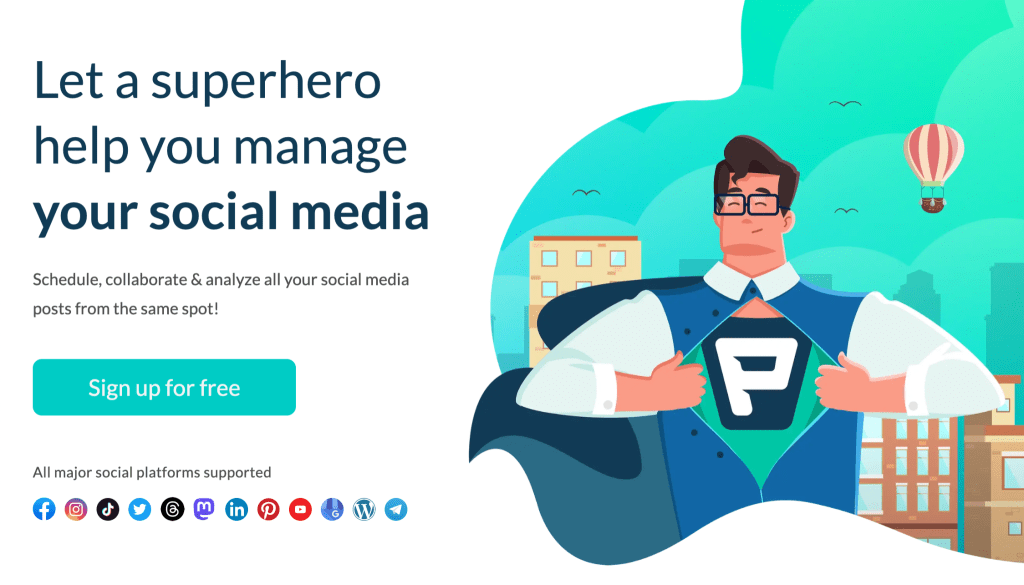
Did you know that more than 2.6 billion people use social networking sites globally? If you look at the person sitting next to you, there’s a high chance they are registered on at least one social media platform.
Social media is now an integral part of our lives through which we connect with friends and entertain ourselves. But how did we get to this level of social media saturation, given that this hasn’t always been the case?
Brief History Of Social Media
Different forms of media may have existed before the 1960s and 70s. But social media as we know it—online communication with user-generated content accessible to all—only started around the 1970s.
The Penetration of the Internet
In the 1970s, numerous private organizations tried getting computers to interact with one another. Although they took some steps, these organizations didn’t make meaningful development until the 1980s, when personal computers became more prevalent.
Following this was the era of blogging and bulletin in the 1990s, which served as a starting point for social media sites. From this point, it became apparent that people could log onto platforms to read what had been written by someone else. The first platform to make this a reality was SixDegrees.
Then Came the 21st Century
Technology transformed the perception of social media in the early parts of the 21st century. More social media sites started popping up and gaining prominence. Some of these include MySpace, LinkedIn, and Photobucket.
By 2005, YouTube became a hot trend, setting a new pace for how people created content, distributed it, and communicated with their followers. The platform focuses on video content, which has an effective way of shaping content consumption.
The following year witnessed the launch of Facebook and Twitter, allowing users to reach a wider audience base through their posts.
Then other niche social media platforms, such as Pinterest and Tumblr, started coming up.
Today, there’s an influx of social media apps serving various purposes and covering different niches. This diversity is particularly beneficial when considering social media for small businesses, as platforms now allow businesses to connect more directly with their target markets through tailored content and interactions.
This makes it super convenient for users to access information and share the same seamlessly. It also makes social selling a reality, as businesses can now connect with their target markets more easily.
Conducting a social media SWOT analysis helps businesses assess their position in this dynamic environment by identifying strengths, weaknesses, opportunities, and threats in their social media strategies.
What seems clear from this point is that humans will continue to devise various forms of social media to share and create content. We would definitely have more social media terms to learn in the future.
What Was The First Social Media Platform
To contextualize this conversation, it’s important to define social media. If you peruse Google, you’ll come across numerous definitions. Cambridge English dictionary defines social media as “websites and computer programs that allow people to communicate and share information on the internet using a computer or phone.” Voila, now we have cloud telephone systems and more.
This definition helps guide the conversation around what social media truly is. It involves:
- Online communication through mobile phones or computers
- And everyone, as opposed to certain persons, can register and communicate with their friends.
With this in mind, we can safely say that Six Degrees is the first social media platform.
Six Degrees

Six Degrees is considered the first true attempt at creating a platform that allowed users to create profiles and connect with others. People signed up with email addresses and could create personal networks following their registration.
The social media site was based on the “six degrees of separation,” which provides that everyone is connected with no more than six degrees of separation. Launched in 1997 and bought out around 2001, the platform garnered about 3.5 million users. This was a significant milestone considering the era in which the social media site existed.
When the platform was bought out, it sold for $125 million.
Following the short-lived success of Six Degrees, some other social media platforms popped up to serve different demographics.
Let’s dive into the social media history after Six Degrees:
Friendster

About two years after Six Degrees, Friendster was launched with similar value propositions. The platform allowed users to sign up with their email addresses, find friends, and create personal networks. People could also share various forms of content, including photos and videos. Additionally, they could leave comments on one another’s posts.
Within a few months, the platform got over 3 million users. This user base would later grow to accommodate more than 100 million users.

Linkedin emerged in 2002 and was founded by Allen Blue, Reid Hoffman, Konstantin Guericke, Jean-Luc Valliant, and Eric Ly. This was perhaps the first social media platform to focus on the professional niche. The site provides professionals with the avenue to network and develop meaningful connections in their fields.
The platform still maintains its value proposition and has grown its user base to over 575 million people. LinkedIn is also listed as the number 285 most visited site on Alexa.
MySpace

MySpace was a hugely influential social media site in the era when it was launched. Founded in 2003, it attracted millions of users by providing a seamless connection to people across the world. The platform supported both file storage and social networking needs, contributing significantly to its fast growth.
MySpace was sold for $580 million, indicating the platform’s huge value. Soon after its sale, it became the most visited website ahead of Google.
Key Takeaways
Social media has continued to evolve ever since its inception. Although Six Degrees is considered the first online social networking platform, numerous social sites have emerged and surpassed it.
Nevertheless, Six Degrees remains the first platform to allow users to create personal networks and interact with shared content online.
- Social media started when platforms allowed users to communicate online, share content, and interact accordingly.
- Six Degrees allowed users to come together in an online space where they could make friends. The platform had about 3.5 million users before it was bought out.
- Six Degrees provided the template for most other platforms that came after it. Today, there are numerous social media sites, and this explosion won’t stop anytime soon.











